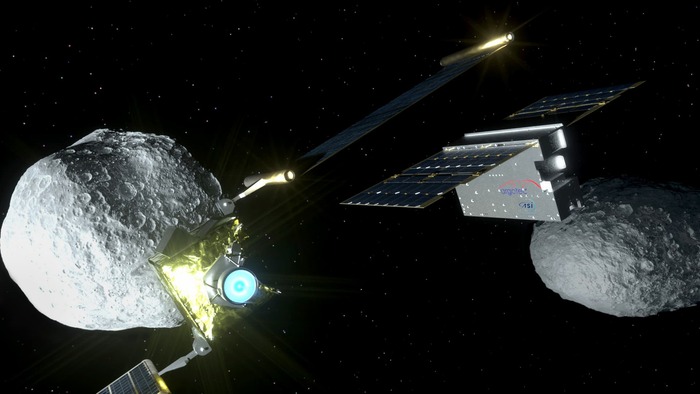After capturing the images of the first planetary defense experiment, with NASA's Dart mission, the Italian minisatellite LiciaCub is ready for the Moon: an identical satellite is planned as part of NASA's Artemis program, while other similar minisatellites will accompany the mission Hera, of the European Space Agency (ESA).
This is what emerged in the event organized in Rome by the Italian Space Agency (ASI) and dedicated to the small photojournalist satellite financed and coordinated by ASI and created by Argotec, with a scientific team coordinated by the National Institute of Astrophysics (Inaf) and composed of the Polytechnic of Milan, the University of Bologna, the Parthenope University of Naples and the 'Nello Carrara' Institute of Applied Physics of the National Research Council (Ifac-Cnr).
One month after the great success of NASA's Dart mission, which crashed on the Dimorphos asteroid to change its orbit, the Italian minisatellite LiciaCube that accompanied it is thus preparing to have a second life: it is in fact still fully functional, with over 620 images of the impact still being downloaded, and we are now thinking about how to exploit it, also in view of its close passage with the Earth, expected in about a month.
After the Dart mission, LiciaCube will pass the baton to his little brothers.
In fact, the small satellite that will fly with the Artemis mission has the same configuration as Marilena Amoroso of ASI: Lunar IceCube, in fact, is a small NASA satellite that will study the lunar ice and the distribution of water on our satellite. collecting data for future human settlement missions.
Two other CubeSats will be aboard the Hera mission of ESA, which should leave in October 2024 and reach Dimorphos at the end of 2026, to understand what happened after the collision with Dart: the Milani minisatellite, built by the Turin-based company Tyvak International, will carry out observations of the surface, while Juventas (of a Danish company) will carry out radar detections of the interior of an asteroid for the first time.
LiciaCube, the first Italian mission in deep space, was launched together with the Dart probe on November 24, 2021, from which it disengaged after a 9 and a half month cruise, 15 days before the impact, in order to photograph the event from a safe distance.
Traveling at a speed of about 6.6 kilometers per second, he managed to acquire more than 620 images, witnessing the impact and acquiring scientific images that will tell us a lot about the nature of asteroids, residues of planetary formation that have arrived almost unchanged to us. .
In addition to the study of the bodies that inhabit the Solar System, minisatellites such as LiciaCube may have many applications in the future: from planetary defense missions, of which Dart was the first test, up to

